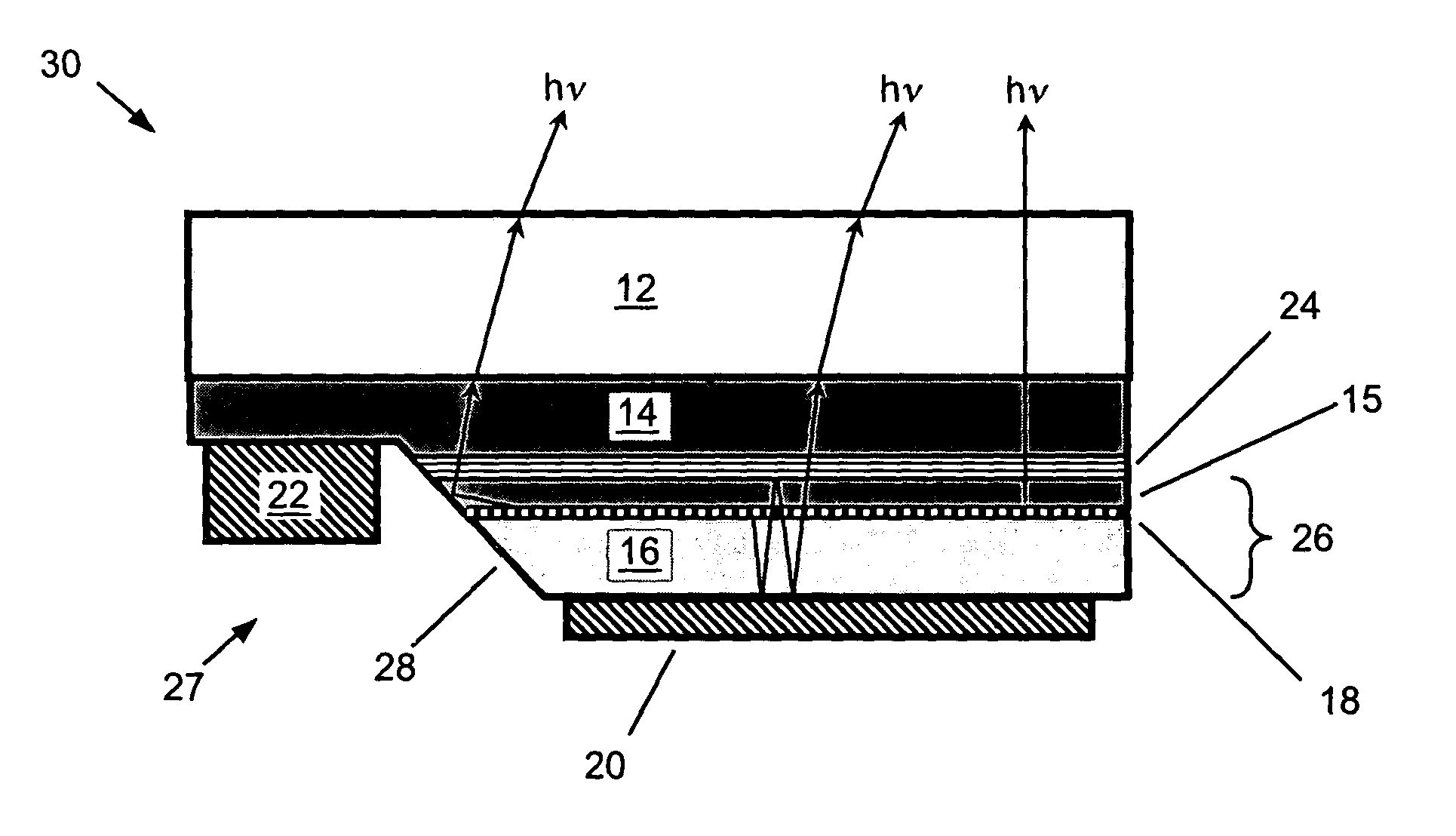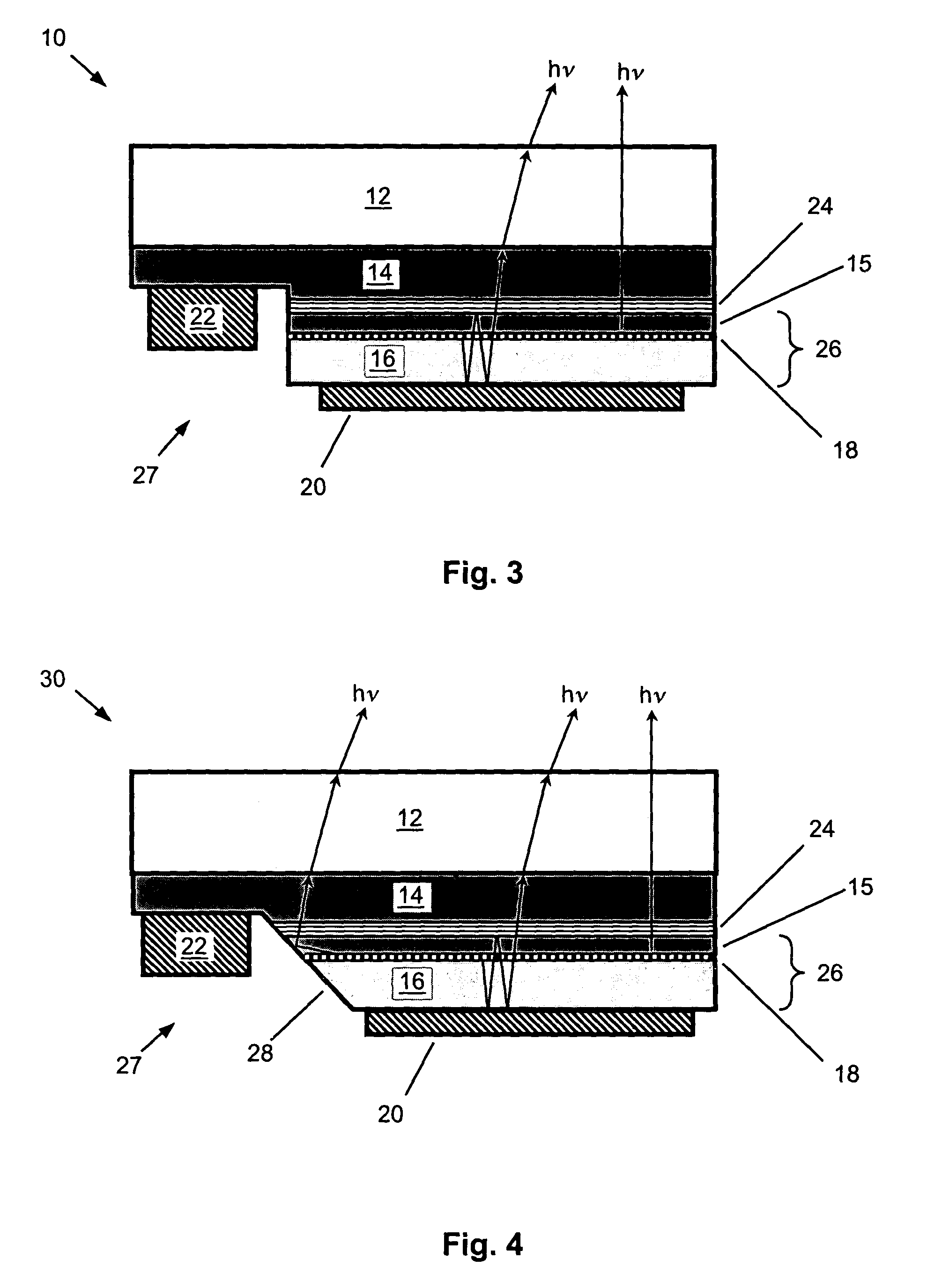Flip-chip light emitting diode with resonant optical microcavity
a light-emitting diode and flip-chip technology, applied in the direction of basic electric elements, semiconductor devices, electrical apparatus, etc., can solve the problems of large number of layers, increased electrical resistance losses, and limited nitride led performance extraction of light from semiconductors, etc., to achieve enhanced efficiency, easy extraction from the device, and enhanced light emission
- Summary
- Abstract
- Description
- Claims
- Application Information
AI Technical Summary
Benefits of technology
Problems solved by technology
Method used
Image
Examples
Embodiment Construction
[0018]Note that in the drawings, the thicknesses of the various layers of insulating, semiconductor, and metallic materials; and other dimensions, such as the width of contact pads, are not drawn to scale, but, rather, are shown schematically for purposes of illustration and easy identification.
[0019]FIG. 3 shows a schematic cross-section view of a first example of a flip-chip LED with a resonant microcavity, according to the present invention. Flip-chip LED 10 comprises a transparent growth substrate 12 (e.g., sapphire). First n-doped buffer layer 14 (e.g., n-GaN) overlays substrate 12. Partially reflective mirror layer 24 overlays the first n-type buffer layer 14. Second n-doped barrier layer 15 (e.g., n-GaN) overlays partially reflective mirror layer 24. Light emitting active layer 18 overlays second n-doped barrier layer. P-doped barrier layer 16 (e.g., p-GaN) overlays light emitting active layer 18. Light emitting active layer 18 resides in-between second n-doped barrier layer ...
PUM
 Login to View More
Login to View More Abstract
Description
Claims
Application Information
 Login to View More
Login to View More - R&D
- Intellectual Property
- Life Sciences
- Materials
- Tech Scout
- Unparalleled Data Quality
- Higher Quality Content
- 60% Fewer Hallucinations
Browse by: Latest US Patents, China's latest patents, Technical Efficacy Thesaurus, Application Domain, Technology Topic, Popular Technical Reports.
© 2025 PatSnap. All rights reserved.Legal|Privacy policy|Modern Slavery Act Transparency Statement|Sitemap|About US| Contact US: help@patsnap.com



